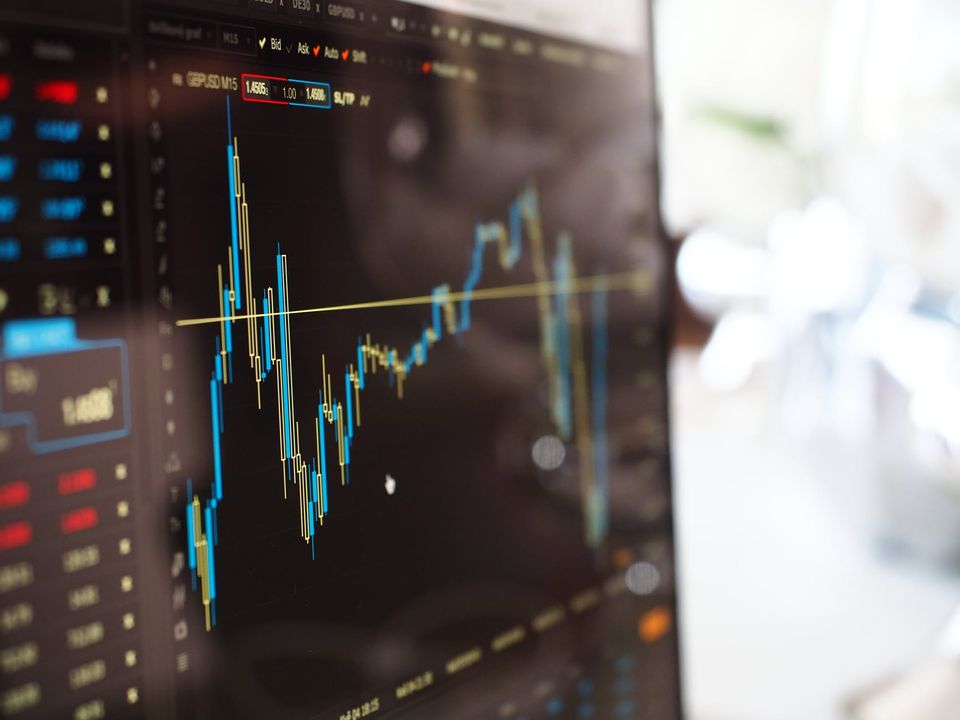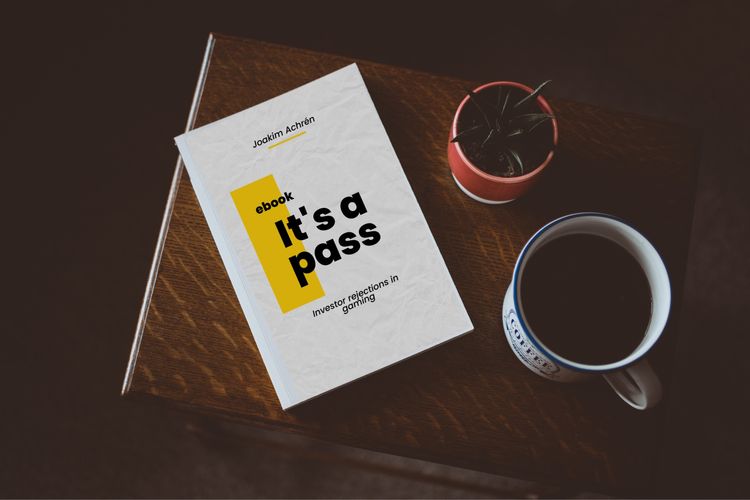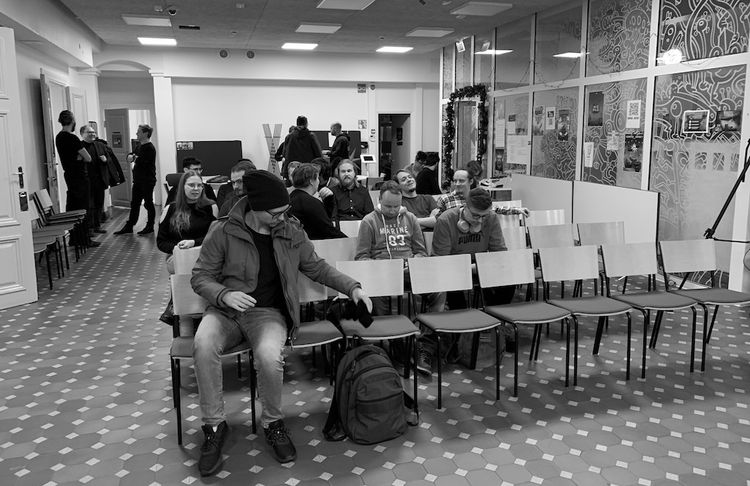EGD Special: Valuations for early-stage startups


I’ve got Ethan Levy back on the podcast and he wanted to ask me about startup valuations, what’s all the terminology around the topic, how to prepare for a fundraise with a valuation in mind, and how investors and founders can think about the right valuation for a startup.
Episode transcript
Ethan: Thanks for having me back, I really enjoy the chance to turn the tables and ask the expert some of the questions listeners in the audience might have as they listen along. Today, I wanted to take the opportunity to learn about what goes into valuations for early stage startups, which is a topic I have no firsthand experience with. As we covered in our founder/idea fit episode, my failed attempt at co-founding a gaming company never made it past the bootstrap phase. And when I work on the publishing side for the N3TWORK Scale Platform, it really doesn’t matter to us how a company is funded, just whether it has the sort of retention and monetization metrics that can scale. So I haven’t even had the privilege of having, what I can assume, is a fairly awkward conversion about what a company is worth. So I appreciate that you’ve let me come on the show and learn about what goes into valuations for early stage startups.
Joakim: Great to have you here again Ethan! Yep so that the idea of evaluating the worth of your company isn’t easy, but all of us are constantly seeing companies getting bought in this heated games market, and I thought it would be a good idea to look at how people can evaluate a company’s value. Be it at the very early stage of when you are already making lots of money.
Ethan: First, let’s start with the basics. What is a company’s valuation? Other than making you feel cool about what your fledgling company is worth, why is this number important?
Joakim: I’m going to focus this talk on the value of the startup at its early stages. So valuation is used by early-stage startups when they are fundraising from investors. You’re like raising $100,000 and then for that sum of money, the investors will want a piece of your company in equity. You’ll end up giving out a certain percentage of the company. Depending on the valuation, you might give up 10% of the company for 100K, or 5%, or whatever. It all depends on the valuation that is agreed upon between the founders and the investors.
Here’s some expansion on the terminology
- Pre-money valuation. What the company is worth before the fundraise.
- Post-money valuation. What your company is worth after you include the ask to the pre-money. Hence the naming post-money 🙂
- When valuation comes up, it’s good to be clear about pre or post money. I’ll expand on the example of raising a 100k. If you’d say that the pre-money is 1m USD, then fine, you’re pre-money is 1 million. Then you’d end up with a post-money of 1.1M. That means that the investor owns 9.1% of the company. But if you said that post-money is 1M, the investor gets 10%. 0.9% is a big difference.
- The important part here where things can go wrong is that founders don’t make sure which one they are talking about. Just to be on the safe side, make sure you always talk about pre-money.
Ethan: To really understand what goes into a company’s valuation, I’d like to dig into your firsthand experience with Ironstar Helsinki that I learned about from Long Term Game. As a first time founder, where did the money for the studio come from?
Joakim: This was 2005 and I had saved up about 20,000 euros which meant that personally I didn’t have any problems going without a salary.
I hired a group of students from the local game development school where I was teaching. Programmers and artists. The first few months, the students were doing their internship program in my company, but I ended up hiring five of them in early 2006.
That’s when I secured the first funding, which was a bank loan that I personally covered, which allowed the company to seek government grants. The schemes have changed a bit in 15 years, but it’s still pretty much the same. You fork up 50,000 euros, and the government will double that with grants.
I believe the total amount was in 2006 about 120,000 euros, which lasted until the end of 2006.
Ethan: Wow, that’s amazing. You have no idea how jealous US based developers are whenever we hear about government support like this or the Canada Media Fund that helps fund creative ventures like this. When we started QuarterSpiral, two of the cofounders just burned their personal savings paying for the third. I value that experience, but it’s a huge barrier to entry to the idea of ever starting a gaming company again to just set your savings account to 0 with no government support. So you started as a bootstrapped company in 2006, how long until you decided you needed to raise money? In total, how many rounds of fundraising did you do?
Joakim: Well, the first round was raised in early 2007 from a fund called VeraVentures, which was a Finnish startup fund, investing into early stages startups that were still pre-revenue. In that round, we raised 150,000 euros. In 2008, I also raised an extension from the same investor, which was yet another 150,000 euros.
In 2009, I managed to raise 500,000 euros from a new investor called OpenOcean Capital, which had just started operating. That was the last funding round which I raised for Ironstar, which eventually closed down in 2011.
Ethan: Okay, so three fundraising events, once a year for three years. In those three events, you raised 800,000 euros, and including your bootstrap capital and government grants, that’s 920,000 euros overall in funds raised. Obviously, at the bootstrap stage there’s no need to value the company. But what were your valuations at each of those fundraising events?
Joakim: The first round was at 1 million euros, the second one at 1.35 million euros and the final round at 3 million.
Ethan: Oh wow, that must have felt pretty good, the first time you were able to say “I started this company and now it’s worth 1 million euros.”
Joakim: It was a great feeling. It’s often said that celebrating fundraising is not a good idea, but I believe that founders should celebrate all their small wins, because they need positive moments and celebrating all the small wins will boost the spirit to push forward.
Ethan: So 150,000 euros at a 1 million euro valuation, does that mean you sold 15% of your stock to VeraVentures in that initial fundraising round?
Joakim: That is correct. The valuation was a post-money valuation.
Ethan: And then a little over 11.11% in the extension and 16.67% in that big 500,000 euro round. Do I understand the basics correctly? That over the course of those three rounds you end up selling about 43% of the company to investors? Or are there new stock issues that accompany these fundraising moments or some other process of adjusting ownership at each fundraising event?
Joakim: Because you are making new shares, all the previous ownership gets diluted when you do a new funding round. Let’s say there were 1m shares before the first round. Then we created 150k new shares for investors, increasing the total shares to 1.15M shares. And in subsequent rounds, summed up to the total shares, it adds up to a 37% dilution for the founding sheres. In other words, we ended up giving up 37%.
Ethan: Oh, I see now. So with each subsequent fundraising round you issued new shares, and this diluted the value of the previous shares issued. Early stage investors I assume expect this type of dilution when they invest in companies. When you were looking at these various offers, what considerations did you make when comparing valuation, fundraising amounts, dilution and the VCs making offers?
Joakim: I didn’t really know back then that these were good valuations for me, for the investors or for the company. I had no clue.
Ethan: That’s why we’re doing this episode, right? To help those future Joakims understand the process around valuation and make the most informed decisions possible. So your last fundraising event was in 2009, what ultimately became of Ironstar?
Joakim: In 2010, the company was profitable and scaling nicely with our Facebook game called Disco Empire. We had MAU of close to half a million. All looked well, until Facebook decided to change what people saw on their News Feeds. Friend Requests from games were also hidden under a specific games section on Facebook. The organic new users that we were used to seeing, were suddenly gone.
In a few months, our cash position got really bad, and we couldn’t persuade our existing investors to give us more money. So the company shut down in June 2011.
Ethan: Right, I remember what a big deal that change was while building Dragon Age Legends for Facebook. The timeline is a little fuzzy for me, but I believe the News Feed change came before we launched, and luckily we had the brand name recognition of Dragon Age and a few other advantages like email lists and cross-promotion from being at EA. But I honestly don’t think we understood the whole CaC vs LTV equation enough to do test marketing and measure if we could scale profitably or not at the time. I don’t think we had a mature enough understanding of how to manufacture success. But like Disco Empire, our Dragon Age game ultimately got shut down. So that was your first founding experience. What lessons did you learn about managing valuation that wanted to apply to Next Games?
Joakim: There’s a couple of things.
First, you got to see both sides of the situation. From the investor’s side, what is the risk they are taking? You got to model in your head what they are thinking about the possibilities. How much work will they need to put in to help the company? Often founders are just raising, so that they can then get on with their work. But the smart founders and smart investors know that it’s a partnership and both will need to roll their sleeves to make things work. I’m super happy with how our angel round for Next Games came through, as we really got the right kind of investors on board, who were willing to do a lot of work for the company. In advising, in board membership, in recruitment and later on, participate in future financing rounds.
From the founder’s side, you’ve got to think about the road ahead. If things go well, you’ll most likely end up doing two to four funding rounds before you get the escape velocity. In games, when you find a game that has positive unit economics, meaning your CAC is lower than your LTV, you can scale the game and build a multi million dollar business. You wouldn’t need to raise more. Giving out 20% to 25% with each round will end up taking the founders to below 50%, but that’s how you get to build really big companies.
Ethan: Okay, now that we know a bit about your experience with Ironstar and the lessons you applied to your future ventures, let’s dig into the topic at hand. Imagine I’m a founder, I’ve been bootstrapping for a while and I’ve decided to go after venture capital. Or maybe I’ve done a friends and family round or an angel round and I think it’s time for the next injection of capital. As a founder, how do I know if the time is right to raise venture capital?
Joakim: There’s three things that matter for being ready to fundraise from VC at your stage. First: do you have an experienced team who’s built something amazing in your career, preferably together? Think about the example of Dream Games. Second: do you have any retention KPIs for your game? Day-1, Day3 to Day1 ratio? VCs who know gaming and who invest in the early stage, will appreciate any early retention numbers. CPI and monetization numbers are a big plus, especially if the retention numbers aren’t superior to the rest of the games that are in the market. Third: are you doing something in a market that is unique and is an obvious founder/idea fit. This requires some expanding: you might not have the triple A team, the most sought after team, but you have a very competitive team and you are doing something new. The experienced gaming VC will evaluate your idea and calculate the odds of success. And if the risk is something they are willing to take, you might end up having a chance of raising from VCs quite early.
But then let’s look at the situation from the founder’s perspective. If you don’t need the cash, well the best time to fundraise is when you don’t need the money. You might get good terms.
Then there’s dilution sensitivity, but should aim to give out 16-23% of the company. Min. 15% max 25%.
Ethan: And how should I prepare for the fundraising process?
Joakim: Let’s take this one step at a time.
First, you want to understand if you are you ready for a fundraise? Take it seriously, it’s a marathon. You’re going to be spending a lot of time talking to people.
In an optimal situation, I’d say that 90% of the fundraise happens before you meet the investor.
What do I mean by that? Six months before the first meeting with an investor, say to yourself: “What is the amazing story that I’m going to tell to the investor in six months”.
Like, “our game’s revenue is growing at 10% week over week”. Paul Graham has this essay called Growth where he talks about the growth of a startup. 6% weekly growth is great, 8% is world-class and 10% is outrageous growth.
The valuation really ties back to this. If you’re not ready to raise, no valuation will matter. Or a low valuation will hurt you later as you’ll need to raise more quite soon.
If you are planning to go down the VC path of raising VC money, you want to understand what is really something that most of the gaming VCs are looking for. What is the sort of package of team, idea, market, execution phase, and all the risk and unknowns that they are willing to tolerate.
Start thinking like them. What kind of games company would you invest into? That’s all something that you can easily learn. Sell them what they are looking for and you’ll get VC money.
It might sound weird and phony, but the best gaming VCs are actually quite good at understanding the risks and making a case for something that has a higher likelihood of succeeding. So if you’re thinking about starting a game studio, learning from VCs will derisk your company anyways.
Ethan: Let’s say we’ve met and you’re sold on my vision, you want to invest in my company, maybe you want the Joakim Syndicate to be the lead investor in my angel round. How do you go about determining what you think is a fair market value for my company? What are the factors you consider?
Joakim: That’s a great question.
Fair market value at the early stage, when there is no revenue or even retention numbers, it really depends on the team.
- Is the founding team solid? Rock star founders, no weak links.
- Are the founders serial entrepreneurs?
- Are they business builders?
- Have they been heads of studios?
Ethan: Got it. I know from our previous conversations that if we’re talking about the angel round, people might be raising on a deck and not even have a tech demo or prototype. So the quality of the team is as important if not more important in determining if you will make an investment in the company. And not only is that experience critical to getting someone to commit to you, but it also increases the fair value of your fledgling company. So for instance, the Ethan of today who has Tetris and Legendary under his belt is a much more valuable cofounder than the Ethan of QuarterSpiral from a decade ago that had a decent amount of industry experience, but no real hits that he contributed to. Other than team quality and experience, what other factors go into determining the valuation?
Joakim:
When you hit retention numbers that are clearly above 50% day-1, preferably closer to 60%, you can start having lots of discussions and raising quite easily. The gaming VCs know that getting a game that retains players is always the best indicator that there’s something there.
Then the geography matters as well. Mostly because of salaries. In Europe, you’ll end up raising at probably 70% to 80% lower valuations compared to the US. I remember after Supercell, one VC was telling me that Helsinki has this Helsinki Premium, where seed deals can see an increase of 25% in valuation, just because they are in Helsinki. I don’t think that rule applies anymore, or atleast haven’t heard of it. Great teams can come from anywhere!
I feel like a similar vibe is going on in Istanbul, where valuations have gotten out of control
Eastern Europe is getting better, but the valuations used to be quite low. Local investors were getting sweat deals for themselves. Sort of vulture capital. But now the devs in that region have become smart. They set up an entity in the UK but all live in low-cost countries.
As long as your strategy is valid. Quick MVP out into the market to measure CPI and engagement metrics.
Ethan: I see. So pedigree matters, location might matter. Proof of traction matters. I imagine that can be a big difference maker in a 1 million euro valuation vs a 5 or 10 million euro valuation.
Joakim: Yeah, it’s only a matter of how long you can go without raising, and getting that traction, and then raising. In Finland, we have government grants that allow teams to only raise a small 50K angel round and then get a non-dilutive grant to double that. They can go on a tight budget for a year. That’s a lot of quick prototyping and soft launching of early builds. That model is quite popular here.
Ethan: Okay, so we’ve had our series of meetings, you’re sold on my team and my vision, you’ve decided to invest. How does valuation come up? What does that conversation look like? Is it driven by the founder or the investor?
Joakim: The big question here is: How does valuation come up?
The investor might ask: “What valuation were you thinking? What dilution were you thinking?” This question can even come up early in the round
Founders should never talk about valuation. It should be something that the market will decide. You need to answer: “Look, we are looking for the right partner and the right amount of money to scale the business. I assume that valuation and all of this stuff is going to work itself out. Because this is a very investable business.”
Ethan: And once the process is complete, how soon do I as the cofounder or CEO start the process on the next fundraising round. Your Ironstar fundraising rounds were spaced about a year apart. Is it raise money, then heads down for the next year? Or do I start the process on the next round the very next day? I imagine that every fundraising round is another marathon; that you can’t just snap your fingers and make another couple million euros appear in your bank account.
Joakim: Yeah so the work on the next round should start as you are raising the current round. You want to tell the story of where this funding will take you. Because in that state of mind, you can show that you are on the growth path, and it will also align with how VCs see big companies growing. They don’t raise one round and then they are done. It’s always three to four rounds, or more, before the company doesn’t need the money anymore. Exceptions can happen. You could invent the next Clash of Clans and you’d not need to raise again.
Ethan: And one last closing question. I’m a big economics geek, which makes sense for a game developer who specializes in monetization and in-game economies. Whenever I am listening to economics or startup related podcasts, their is sentiment that the overall market for money is very frothy right now. There’s a lot of money sitting on the sidelines, looking for something worth investing in, there are a lot of valuations that are perceived as too high for the underlying company, there’s a lot of mention of money being very cheap or available. Are there any trends you’re seeing in the early stage investing market where you think “the market is too frothy” or “this valuation feels way too high” or the like. I know you mentioned feeling like there is a Turkey multiple going on right now. Any other observations?
Joakim: Well, the gaming marketing is really heated at the moment. All the IPOs are spinning interesting stories, and you got all this NFT thingies happening as well. There’s a lot of money trying to get into gaming.
And then you have a lot of talented teams, like Ex-Riot people doing startups. Investors are paying Series A prices for seed deals. Teams with ideas. 10m valuation is cheap.
Lots of investors have funded these ex-Riot companies. Then the companies spend 5-10m and need more. But the risks are the same for investors. I’ve been passing on deals where the heated market is showing up. But there are lots of good studios to back. New and more mature ones. Mobile studios: 10m is fine if there’s traction, and solid metrics on the retention side.
Ethan: Wow, thanks for sharing your time and knowledge. As I said, early stage valuation is not something I have any first hand exposure to as I help evaluate games investment from the publisher perspective with the N3TWORK Scale Platform. Although we’re looking for similar things – team pedigree, fun factor, room for scalable growth – there are not conversations about company value. From my small piece of the puzzle, it’s is the game fun? Does it have monetization depth? Do I believe it can grow with UA investment?
Again, this is an incredible conversation I wish I had had before I ever thought about co-founding a games company. I know so much more now about what matters to investors and how a co-founder should think about fundraising for their business than I did an hour ago. Thank you for sharing.
Favorite Book?
Story that influences how you work?
How can people reach you?
Joakim: Thanks again Ethan, it was so great to talk to you about this topic. And I hope the listeners learned some new things.
Ok let’s end it here. Take care Ethan, speak soon again! Bye Bye!





